Riding the 2022 Suzuki Hayabusa in the canyons of Malibu, California, is a bit like taking a bazooka to a pistol range. You get a great sense of firepower, but really, not a taste of the full capabilities of the weapon. How far away is your target and how fast can you hit it? At least Malibu and the surrounding area isn’t all tight corners and bumps, so we had a few choice moments to explore the Hayabusa’s legendary firepower.
The 2022 Suzuki GSX1300RR Hayabusa is re-engineered and restyled with changes aimed at increasing “real world” performance and maintaining the Hayabusa legend. We did go fast this day, but here we’re going about 28 mph. It’s the job. (Kevin Wing/)
Our 180-mile 2022 Hayabusa GSX1300RR first ride gave us a good taste of what this redone icon is all about, but it sure seemed a long way and long time from the original 1999 Hayabusa model launch in Spain. We had an amazing life-changing day dragging fairings and engine covers at Circuit de Catalunya followed by a day of “On-Road Touring” that ended up with us sixth-gear-pinned on a Spanish freeway about five minutes after ride departure. And we rode like that all day, doing things on a motorcycle that mortals had never before experienced, because no motorcycle had ever been as fast, powerful, and competent as the Hayabusa. Our original Cycle World testbike did a 9.86-second quarter-mile with a 146-mph terminal speed, and achieved a 194-mph top speed past the CW radar gun. On our in-house Dynojet dyno, it made 161 hp at the wheel and 100 pound-feet of torque.
Handling is remarkably good for such a large motorcycle. Steering-head angle is 23 degrees and works with a short 3.5-inch trail and longish 58.3-inch wheelbase for a fine combination of agility and stability. On tight roads, you’ll never forget you’re riding a claimed 582-pound-wet machine. On straightaways, you’ll think the bike is weightless. (Kevin Wing/)
We will get full test numbers when we get our unit back at the office. Until then, I can say the new ‘Busa finds 145 mph in the blink of an eye and seems capable of lifting the front wheel at nearly any speed below that. And even though I burned less than a tank of gas on our ride, I have full confidence saying the bike’s superb balance and flexibility has been retained. It’s also still wicked fast—and remains big even if it is…lighter, perhaps? As a 6-foot-2 225-pounder, I feel right at home on the ‘Busa. Always have, from that first time I let the clutch out on pit lane at Catalunya and for the 12,000-something miles I put on our 1999 copper-colored long-termer. The Hayabusa was, in fact, my first long-term testbike when I was hired at the magazine.
Hayabusa enough for you? Sporty-bike styling of the last couple of decades has often mimicked stealth fighters, but the Hayabusa bucked pretty much every styling convention since its 1999 model year debut. (Kevin Wing/)
As I approached the 2022 ‘Busa for my half-day ride from the hotel launching point, I thought the bike was more Hayabusa-looking than the press photos had suggested. I expected it might have gone a bit too lean-and-mean GSX-R, but in person it retains a strong family resemblance. The cockpit in particular is clearly descended from the first bike’s, with a similar damped-top-clamp treatment, large analog tach, and a speedo flanked by analog fuel and engine-temperature gauges. The bar damping is said to offer improved feel while also isolating bad vibes better. Our Glass Sparkle Black testbike with Candy Burnt Gold accents was a nice homage to the original bike.
Light steering, remarkable torque regardless of engine rpm, a bidirectional quickshifter, supple KYB suspension, and solid Brembo front brakes make riding a flowing backroad a true pleasure. Of all the big-bore hyperbikes, the ‘Busa has demonstrated the best overall balance and this remains true on the 2022 GSX1300RR. (Kevin Wing/)
A few straight-line blasts in lower gears demonstrated that the Hayabusa’s eyeball-flattening performance is very much like it always has been. But it was grand to get onto the winding backroads of the Malibu mountains—bumps, rockfall, tar snakes, and all.
As we swung through the bends, all the torque needed for a brisk pace came while running 4,000–6,000 rpm. But when kicked up to 7,000–9,000, it started to get serious; you could really feel the rear tire start to work when exiting corners. Take it to the white-painted “happy zone” from 9,000 to the 11,000-rpm redline on the tach and… Holy warp drive.
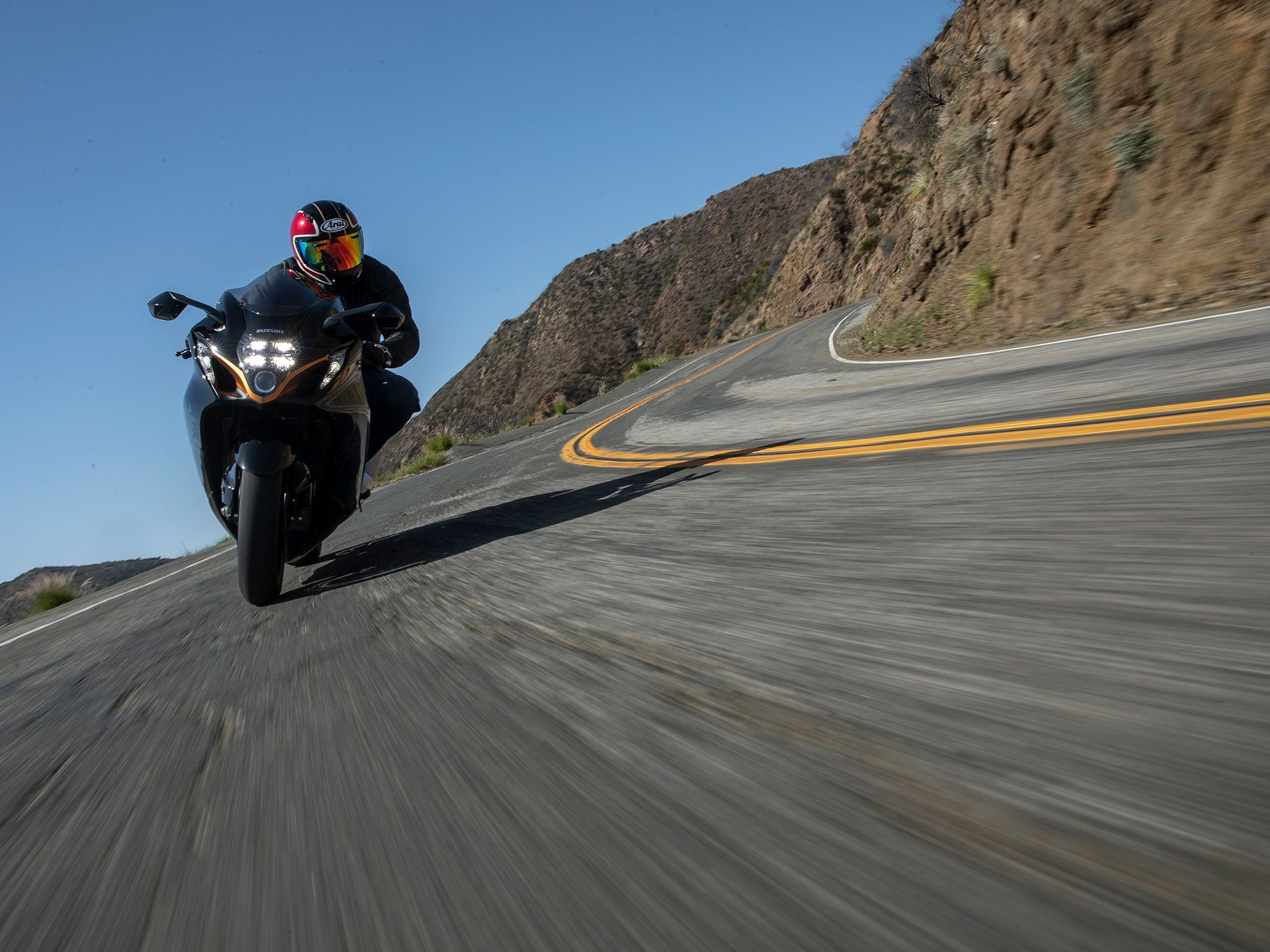
“There are no lighting filaments on this motorcycle,” a Suzuki rep said in the tech briefing. Integrated turn signals and running lights are complemented by stacked headlights. (Kevin Wing/)
We loved the raw gorilla nature of the original no-rider-aids ‘Busa of 20 years ago. But we have to admit the 2022 ‘Busa’s TFT display, found between tach and speedo, and its easy-to-use interface to manipulate ride modes, TC, lift control, ABS, and engine-braking control is quite welcome. So is the “active” mode, with its cool graphic representations of brake pressure, throttle opening, decel/accel force, and best for last, maximum degrees of achieved lean angle. I learned that 48 degrees of lean just keeps the footpegs from dragging. One item of note on that TFT display was that average fuel economy was set to Imperial gallons, for some reason; it read 31.4 miles per Imperial gallon, which translates to 26.2 mpg as we measure it in the USA. Suzuki claims fuel consumption is 18 percent higher than that of the previous model, so it’s burning more fuel. More definitive info to come with a testbike and lots of miles.
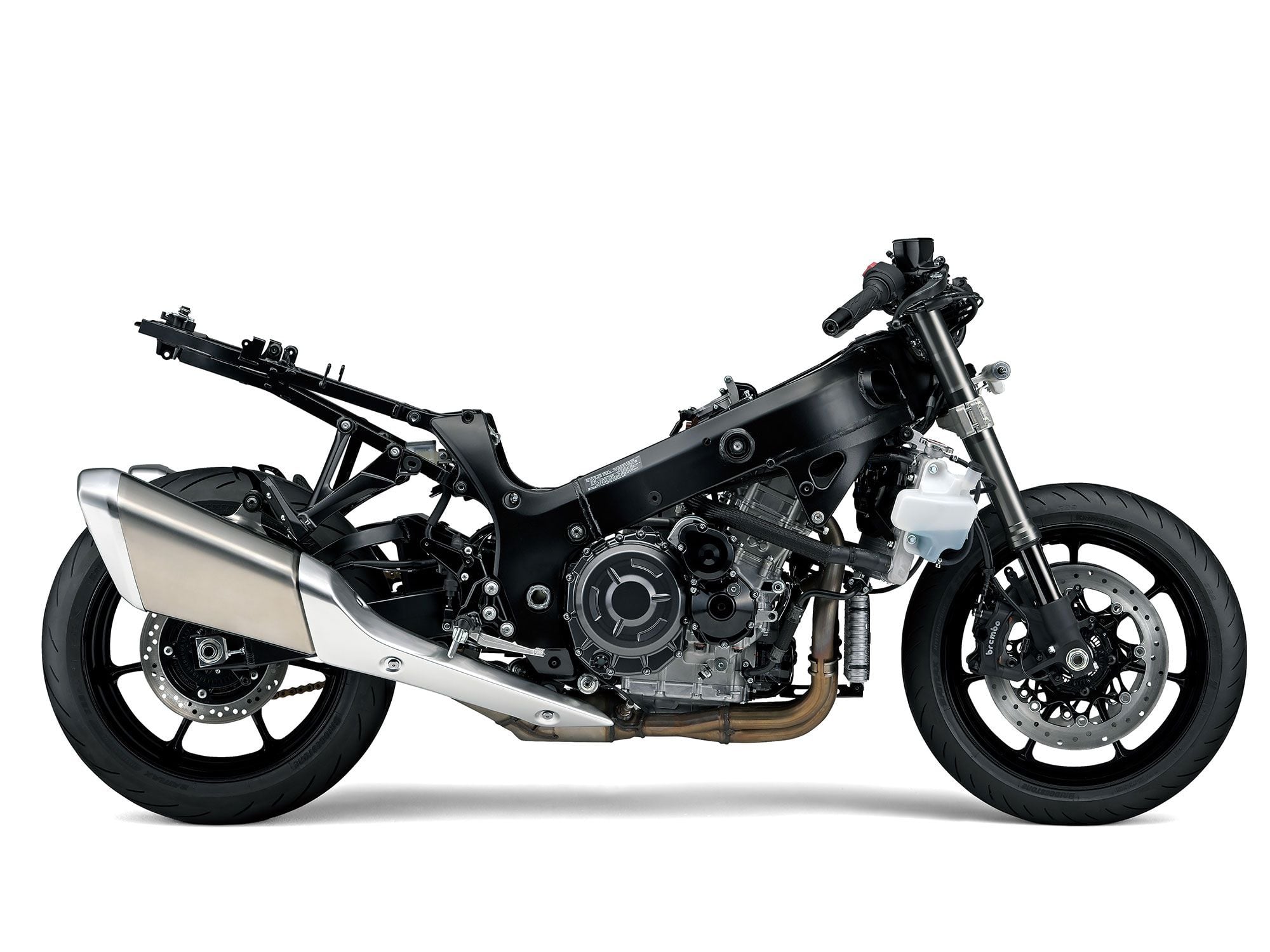
Basic frame design is similar to Gen 1 and Gen 2 twin-spar Hayabusa units. Gen 1 rake/trail was 24.2 degrees/3.8 inches, while Gen 2 got slightly more aggressive at 23.1 degrees/3.7 inches. (Suzuki/)
The Hayabusa’s claimed wet weight is 582 pounds, 4 less than Gen 2′s, so it remains a heavy motorcycle, as is the class norm. It takes some convincing to get the Hayabusa to hustle through side-to-side transitions, and after about 20 minutes of riding I asked for more rebound damping to help keep the bike a bit better under control. It was helpful, and when we get a testbike to do a fully instrumented road test with horsepower and torque numbers, quarter-mile times, etc., we’ll dive more into chassis setup. Ride was plush, controlled, and ultracomfortable. On our ’99 testbike, I once left our old Newport Beach office at 4:30 on a Friday afternoon, burned north straight until midnight to Willows, California, for a two-day Jason Pridmore Star School at Thunderhill, then rode back after burning off the sides of the tires. I’d do that with this new one too.
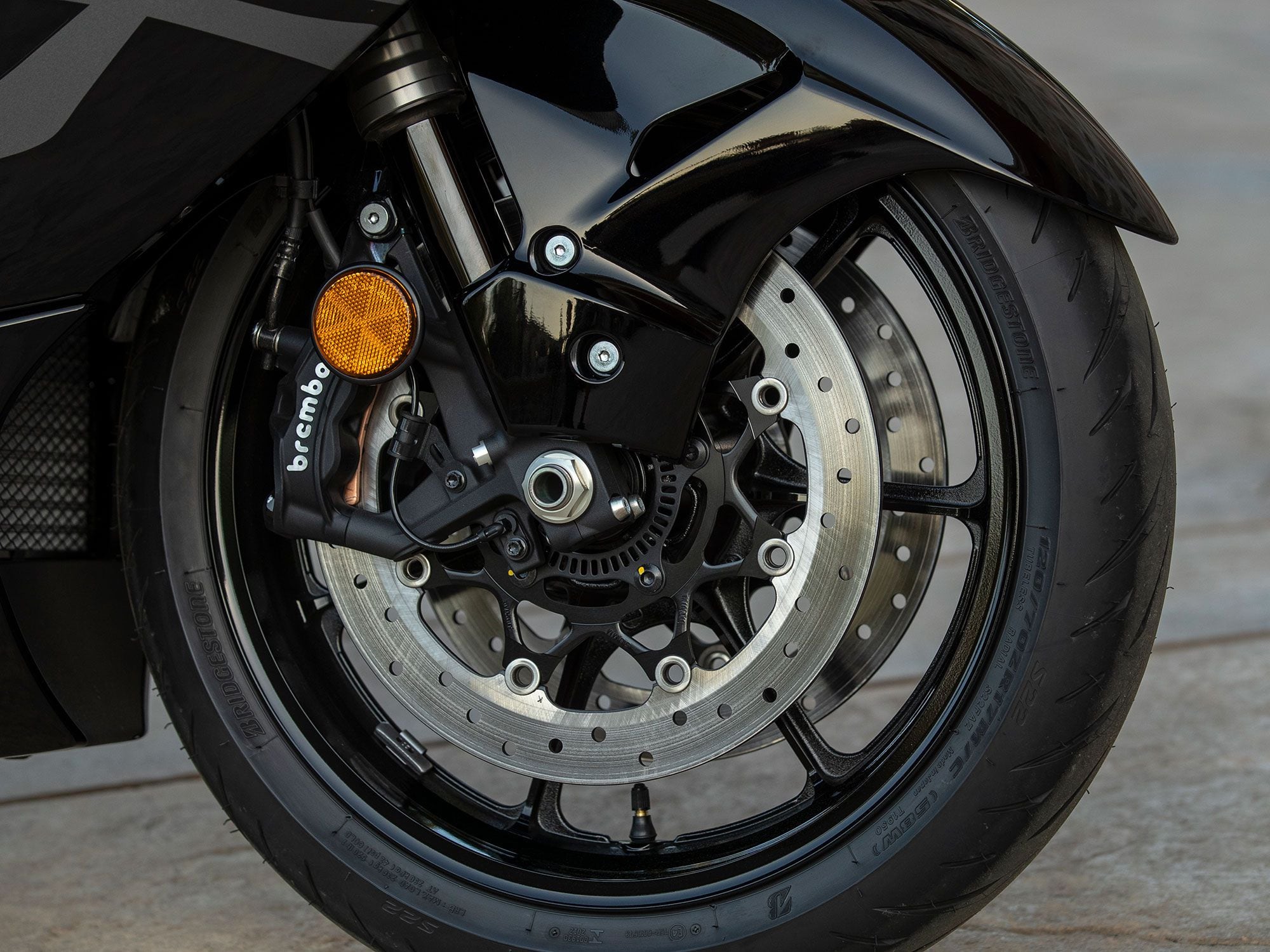
Pity the brakes that have to haul down a heavy hauler like the Hayabusa. Lean-sensing ABS works with a full rider-aid Suzuki Intelligent Ride System to manage traction, wheel lift, engine-braking, launch control, and more. (Kevin Wing/)
Brembo Stylema front brake calipers offer great feel and a lot of power. Suzuki says the new seven-spoke wheels (replacing three-spokers) give better feel for what the contact patches of the Bridgestone Battlax S22 tires are doing. I haven’t been on the last-gen ‘Busa for a few years, so I can’t say definitively if chassis feel is better on this bike, but I can say I felt confident in trail-braking hard (there is cornering ABS) and invoking traction control exiting corners, thanks to the delicate nature of the plentiful information transmitted through the bike.
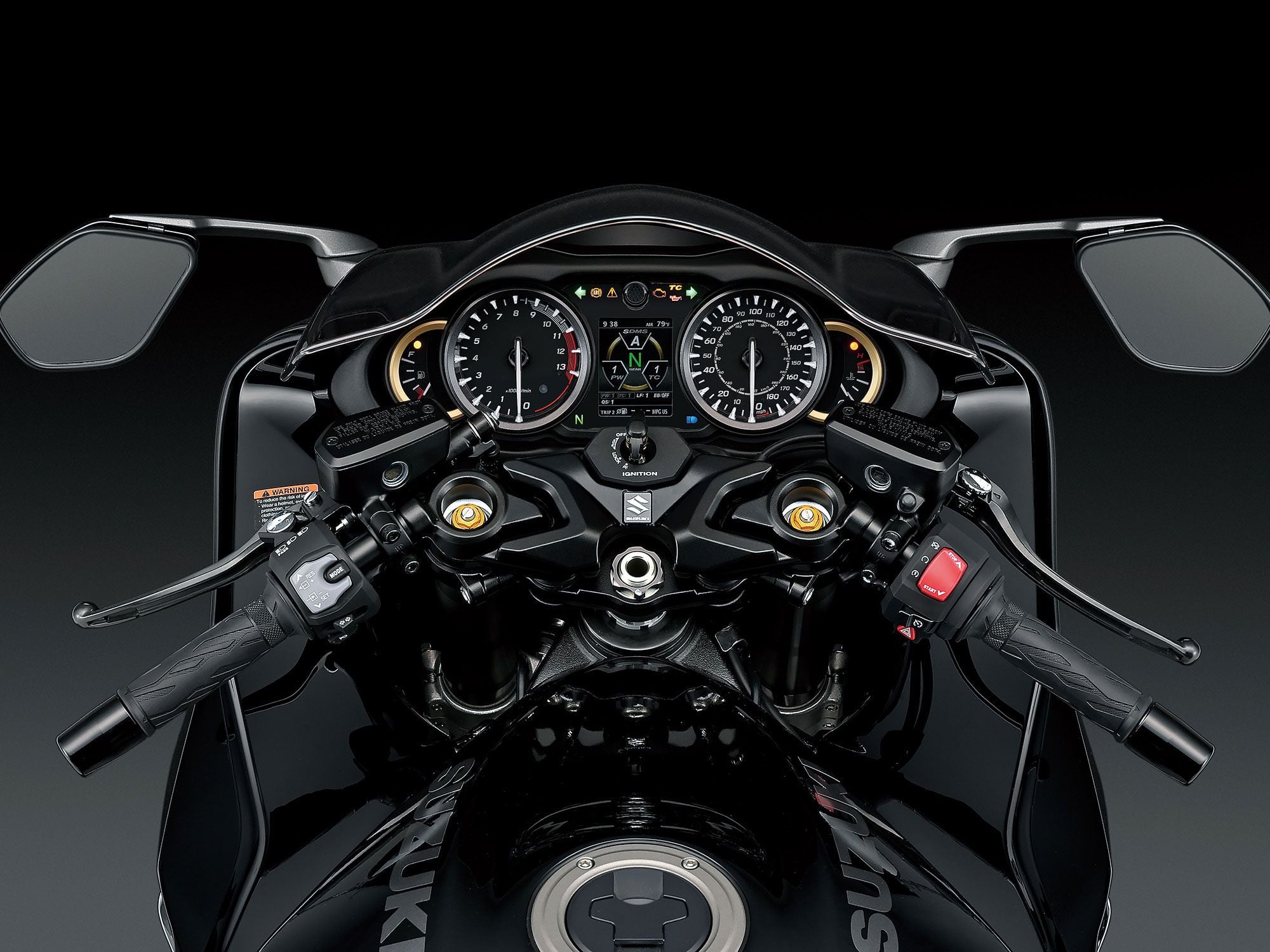
A very Hayabusa cockpit with a color TFT screen to interface with rider aids and other menus. (Suzuki/)
I had a ride leader and videographer on other Suzuki models along for our day, but Hayabusa-ing around as a group more or less demands other motorcycles with supernatural powers. After all, if Michael Jordan wants to play some pickup ball, he’s gonna have to be up against LeBron James for it to be any fun. Maybe a better analogy is the UFC and sparring with Roy “Big Country” Nelson; unless you’re a real animal, you just won’t hang. At any rate, a few corners and rapid blasts to redline meant I was riding alone most of the day.
Suzuki repeated much of the technical information about the new bike at the launch, but Technical Editor Kevin Cameron did an excellent overview, plus tech dives into the emissions/power/torque relationship and the improved durability/strength of key engine parts.
I think the key here, though, is the engine output discussion. Suzuki touts increased midrange horsepower and torque, and improved 0-60-mph and 1/8-mile times while explaining that peak power and peak torque output have been reduced, while also not revealing those numbers. We need to dyno- and acceleration-test the 2022 Hayabusa to know for sure where it stands, but the Hayabusa remains wicked fast. Rider aids and ride-by-wire throttle control may have softened its edge a bit compared to the original bike’s naked aggression, or maybe all the years between then and now have resulted in simply a more refined Hayabusa. Suzuki is touting it as “premium,” a luxury performance bike, and maybe that’s a strategy to cope with the reduced peak output and the $3,800 higher price tag of the $18,599 2022 model year Hayabusa.
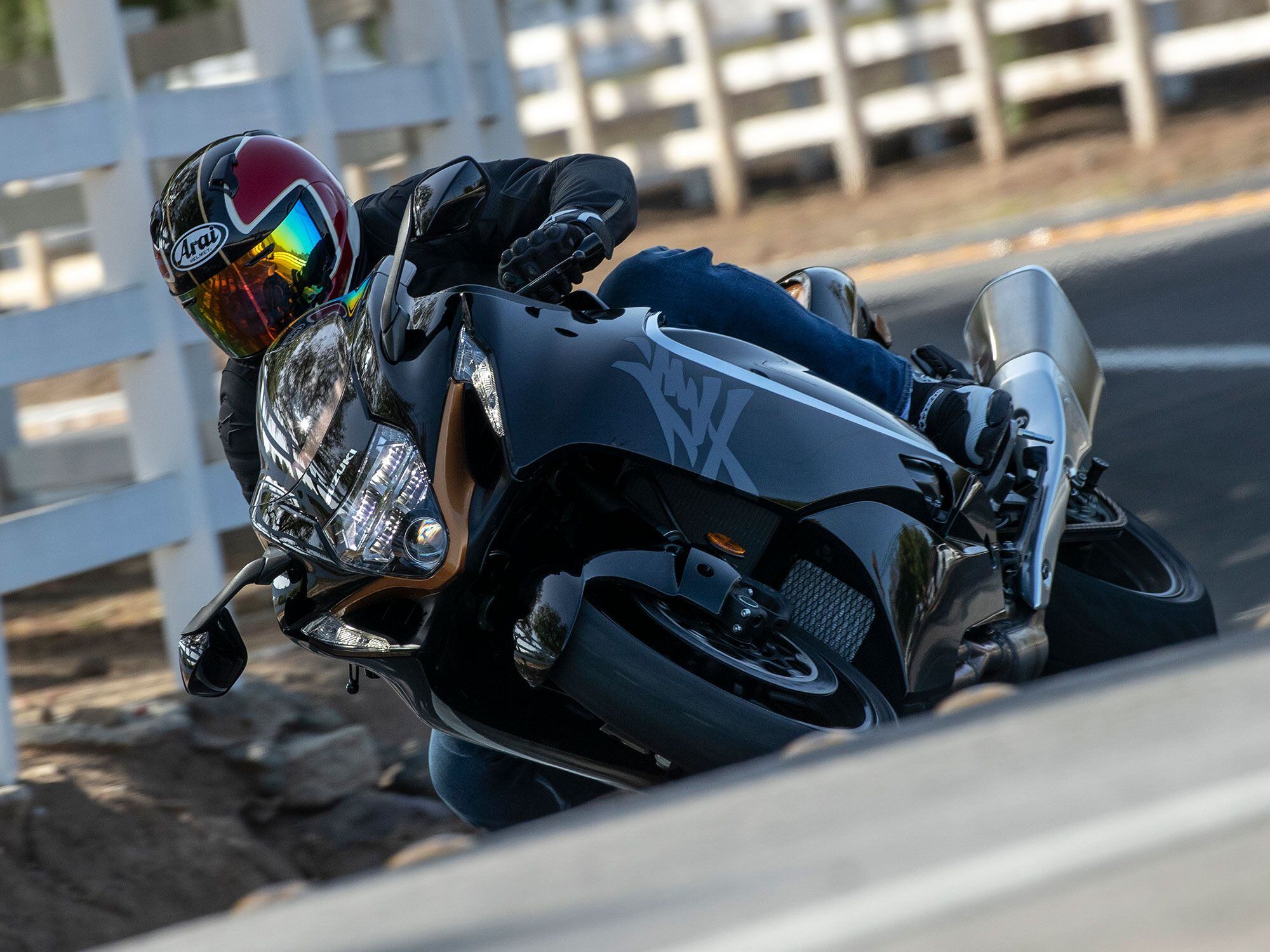
Keeping engine revs in the 6,000–7,000-rpm range provided ample torque for spirited corner exits and to invoke traction control. (Kevin Wing/)
But mere Earthly positioning conversations seem wasted on this bike, because really, all it’s ever needed to be is a Hayabusa. It is its own brand, its own specific thing, stronger than terms like “premium.” In this sense, reduced peak output does seem like a violation of the Hayabusa brand, and we have an interview scheduled with Suzuki engineers in which we hope to understand the challenges of meeting Euro 5 while maintaining high performance. Suzuki can say all it wants about how there is more usable power in the part of the rev range where you ride most, but the Hayabusa was never about usable power. The Hayabusa is about total dominance.
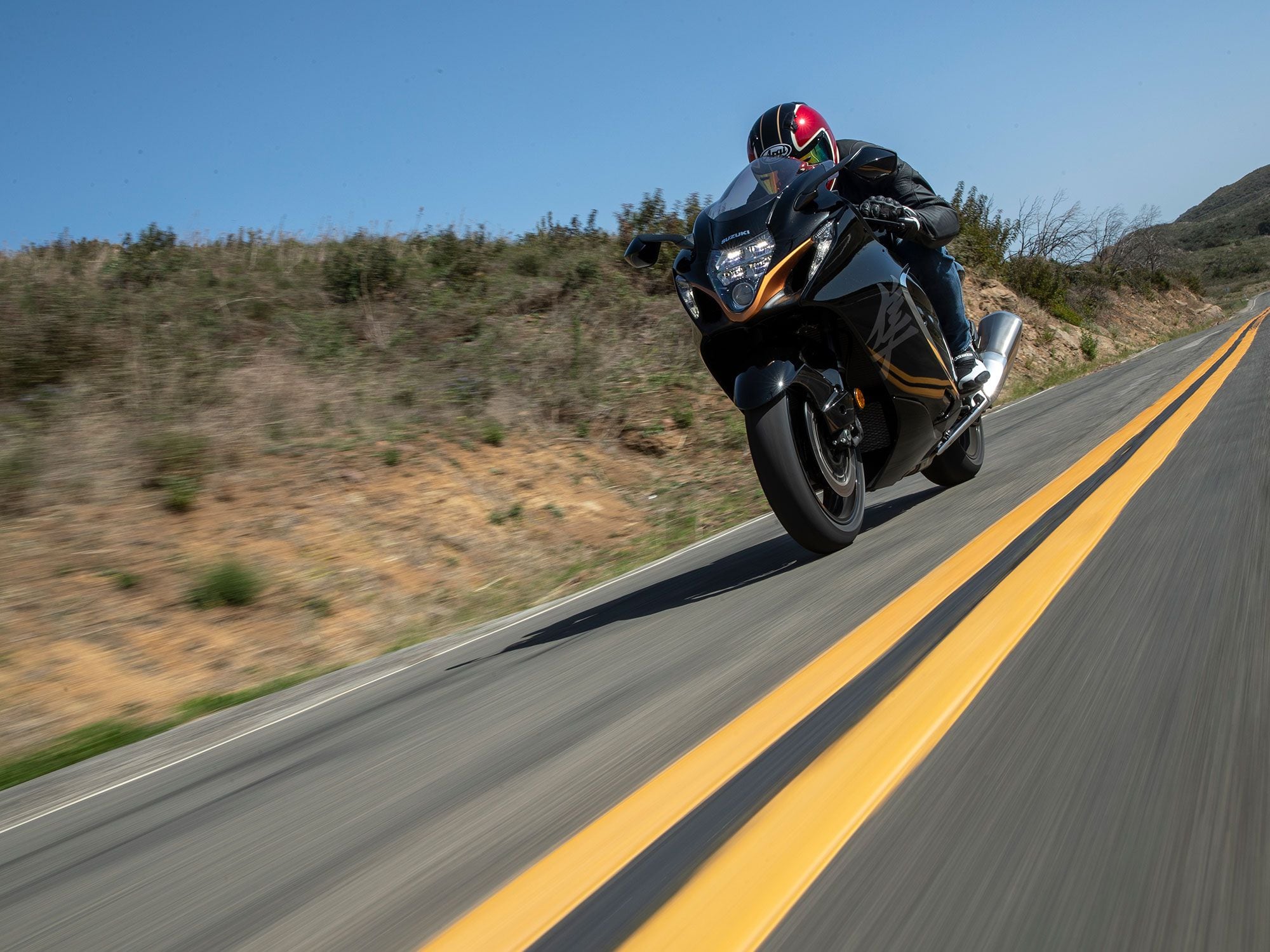
Crunching a few numbers shows the Hayabusa is geared to achieve about 213 mph or 340 kph at its 11,000-rpm redline. Top speed is, however, limited to 299 kph, as is the industry agreement. Tuners, get ready! (Kevin Wing/)
Which makes this part of the conversation interesting: 3,100 rpm in sixth gear is 60 mph and basically idle-plus. Running 120 mph is 6,200, so set the cruise and effortlessly travel as far as the 5.3-gallon fuel tank will take you. This makes 180 mph a lazy 9,300, just when engine power starts to get good. Were it not for the voluntary 186-mph speed limiter that is the industry standard, and notably a result of the original bike’s 194-mph top speed, this would make 200 mph 10,300 rpm, 700 revs under the marked redline. Maximum theoretical speed with stock gearing would be just under 213 mph, which is coincidentally a tidy 340 kph.
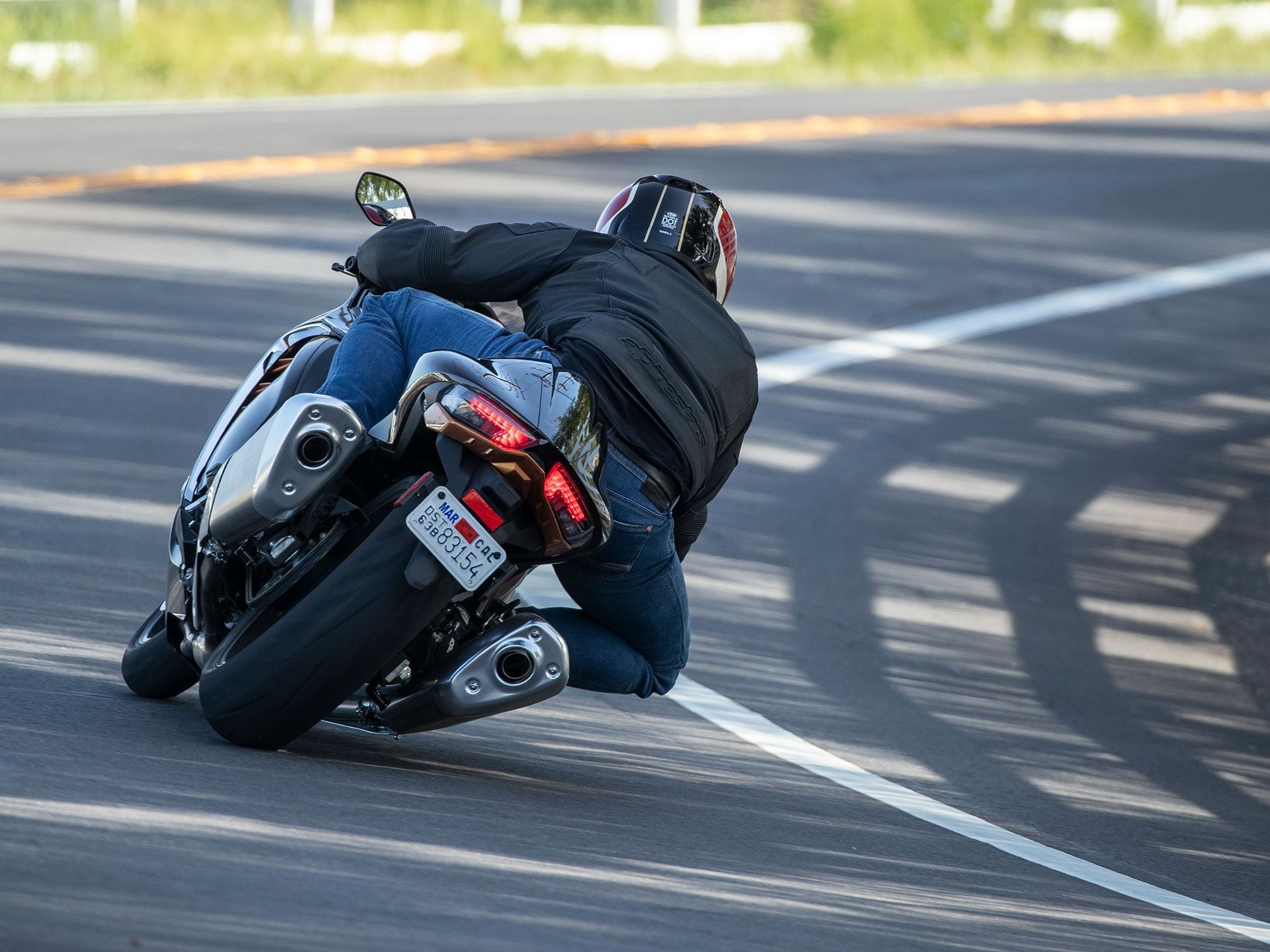
On any list of top-ten most historically significant motorcycles has to be the Suzuki Hayabusa. (Kevin Wing/)
Is it possible now that, because the Hayabusa has existed and expanded our perception of what’s possible for the past two decades, the impact of the new one isn’t the same as it was on that Spanish freeway clicking into sixth gear at 10,000 rpm on the 1999 model? Perhaps. But while the bike is more refined and somehow softer-edged in its new rider-aid-and-less-peak-power form, this is only our first taste of the bike. After a too-brief 180 miles in the saddle, I’d say Suzuki has nailed the ‘Busa feeling. It remains one of the most remarkable motorcycles ever produced. Definitively quicker and better? We have all the numbers from Gen 1 and Gen 2, and can’t wait to bring you the truth about Gen 3 on the street, race course, and dragstrip.
2022 Suzuki Hayabusa Specs
| MSRP: | $18,599 |
|---|---|
| Engine: | DOHC, liquid-cooled inline-four |
| Bore x Stroke: | 81.0 x 65.0mm |
| Compression Ratio: | 12.5:1 |
| Displacement: | 1,340cc |
| Transmission/Final Drive: | 6-speed/chain |
| Claimed Horsepower: | NA |
| Claimed Torque: | NA |
| Fuel System: | EFI w/ 44mm throttle bodies |
| Clutch: | Wet, multiplate assist/slipper; hydraulic actuation |
| Engine Management/Ignition: | Ride-by-wire electronic |
| Frame: | Twin-spar aluminum |
| Front Suspension: | KYB 43mm inverted fork; fully adjustable |
| Rear Suspension: | KYB shock; fully adjustable |
| Front Brake: | Brembo Stylema 4-piston caliper, twin 320mm discs w/ ABS |
| Rear Brake: | Nissin single-piston caliper, 260mm disc w/ ABS |
| Tires, Front/Rear: | Bridgestone Battlax Hypersport S22; 120/70ZR-17M/C(58W) / 190/50ZR-17M/C (73W) |
| Rake/Trail: | 23.0°/3.5 in. |
| Wheelbase: | 58.3 in. |
| Ground Clearance: | 4.9 in. |
| Seat Height: | 31.5 in. |
| Fuel Capacity: | 5.3 gal. |
| Claimed Wet Weight: | 582 lb. |
| Availability: | June 2021 |


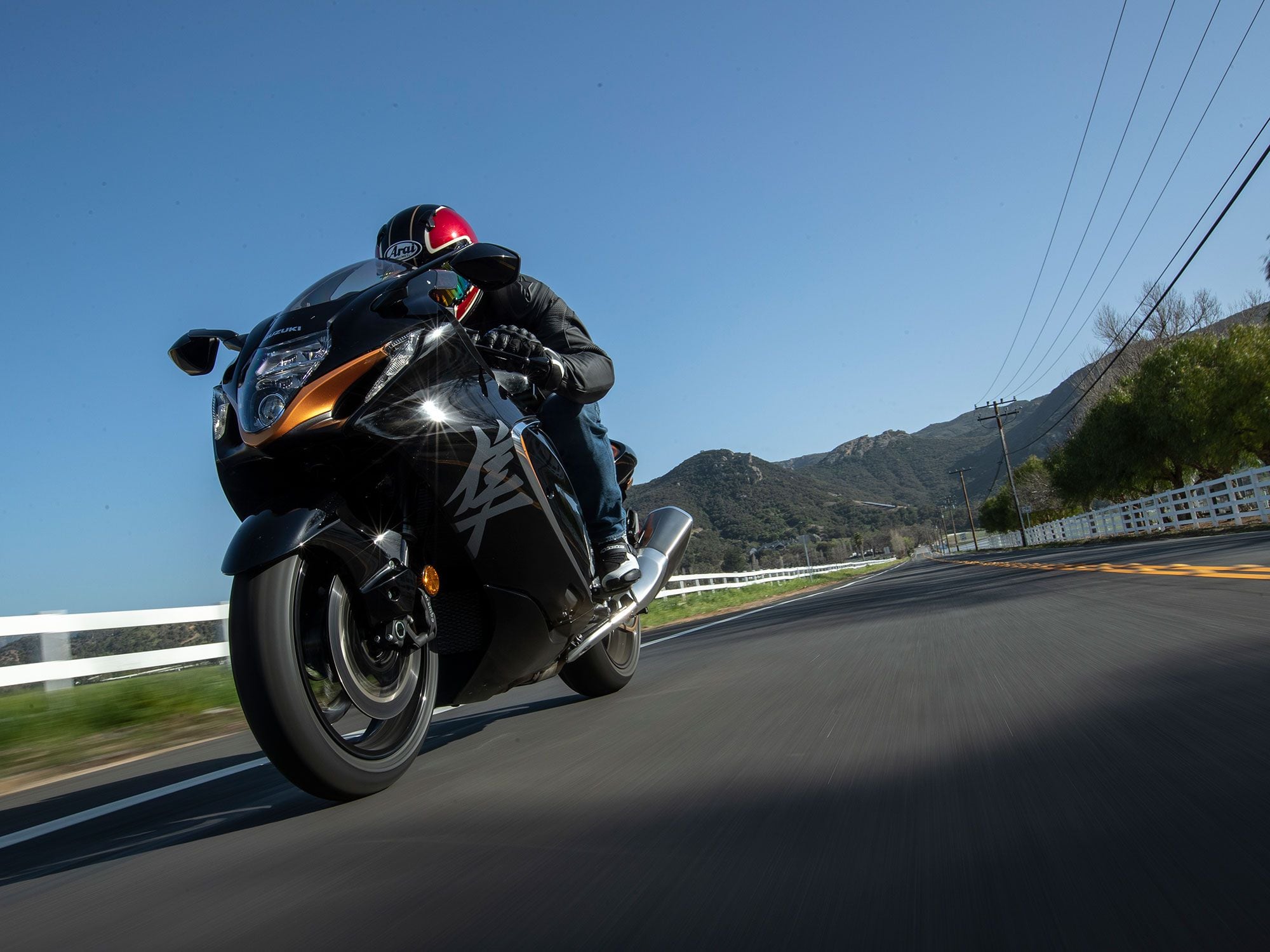
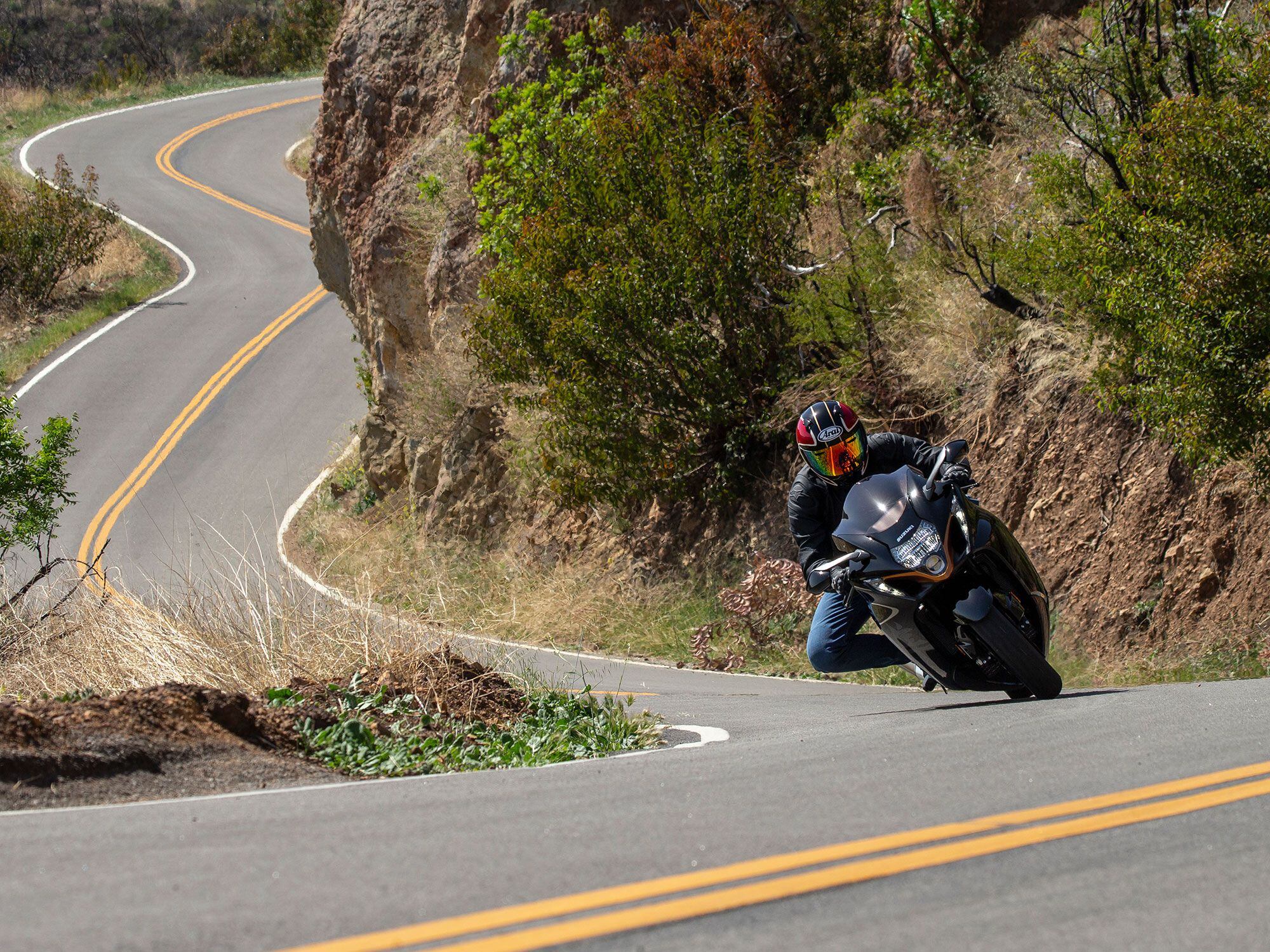
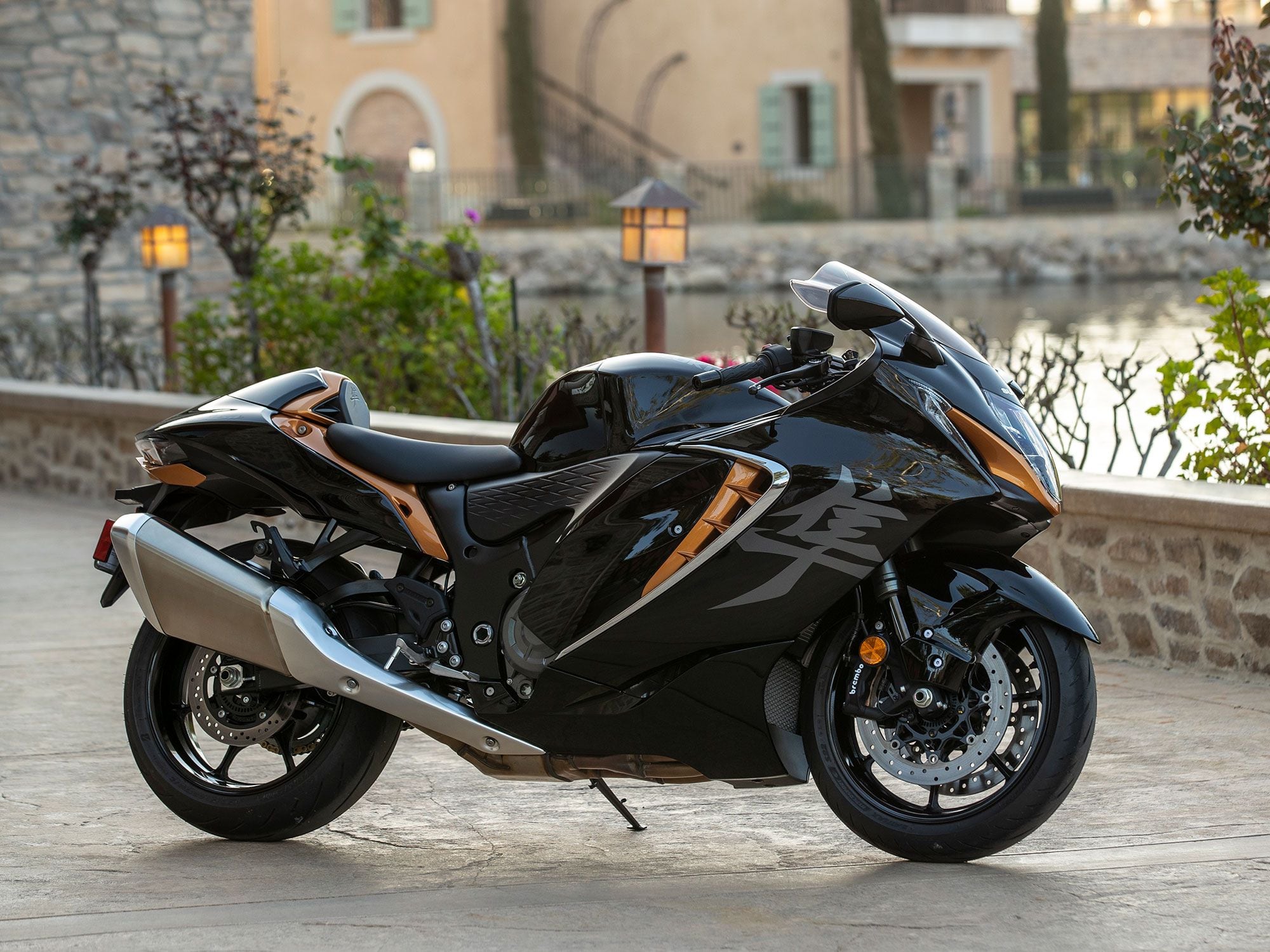
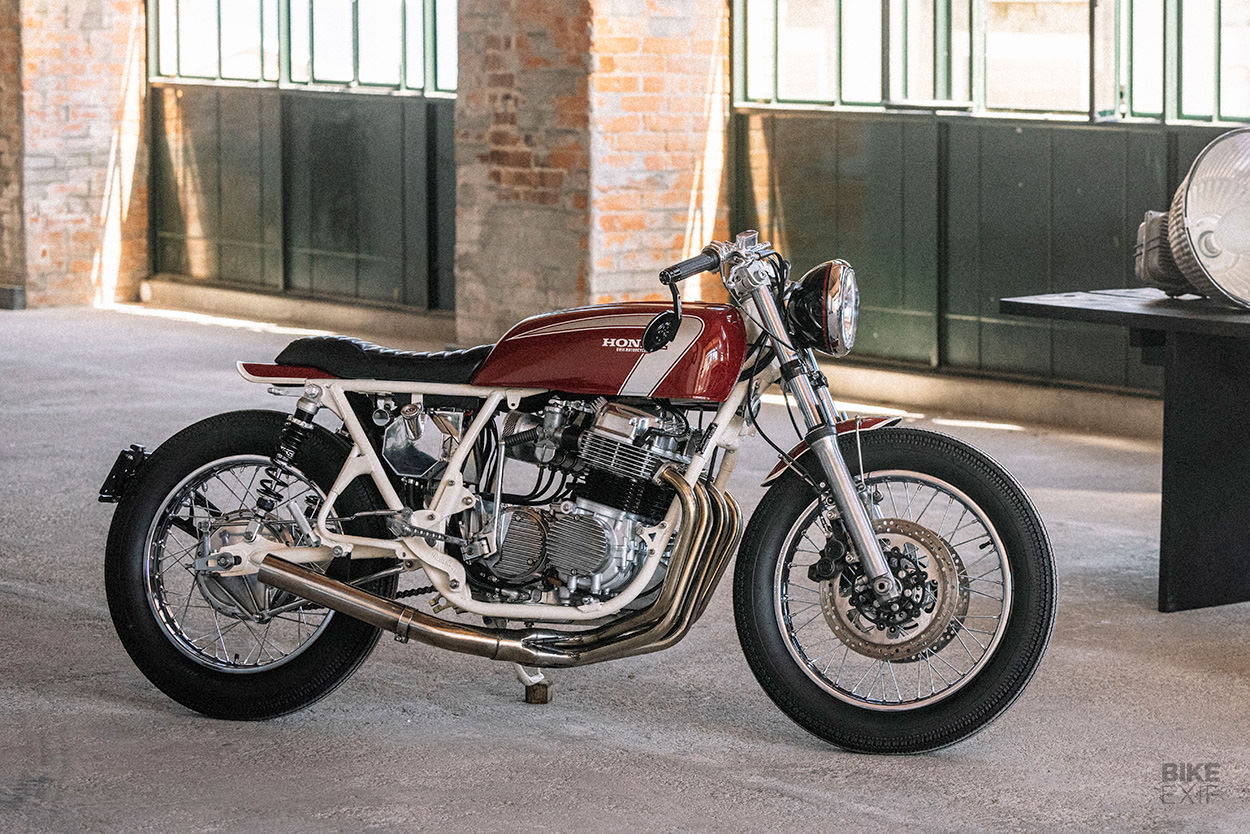
.jpg?itok=lktA1Key)